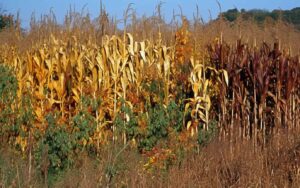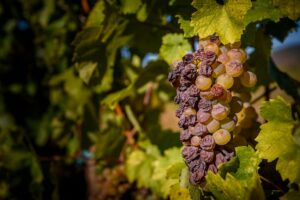Back to: Pre Vocational Studies Primary 5
Welcome to class!
Hello, my bright student! I’m so glad you’re back for another important lesson. Today, we’re going to talk about something that can cause big problems for farmers: “pests and diseases of crops.” Just like humans can get sick, plants can also get sick or be attacked by pests. Let’s learn more about it!
Pests and Disease of Crops

Pests are animals, usually insects, but sometimes other creatures like mites, nematodes (tiny worms), or even birds and rodents, that damage crops. They can eat leaves, stems, roots, fruits, or seeds, causing significant losses for farmers.
Here are some examples of common crop pests:
- Insects:
- Grasshoppers: These insects can eat leaves and stems, especially young plants.
- Caterpillars: These are the larvae of moths and butterflies, and they can chew on leaves and fruits.
- Aphids: These small insects suck sap from plants, weakening them and spreading diseases.
- Beetles: Different types of beetles can damage various parts of plants, from roots to fruits.
- Other Pests:
- Nematodes: These microscopic worms live in the soil and can damage plant roots.
- Birds: Birds can eat seeds and fruits, causing losses for farmers.
- Rodents (Rats and Mice): These animals can eat seeds, grains, and fruits, both in the field and in storage.
Diseases are caused by microorganisms like fungi, bacteria, or viruses that infect plants and cause them to become sick.
Here are some examples of common crop diseases:

- Fungal Diseases:
- Rust: This disease causes orange or brown spots on leaves and stems.
- Leaf Spot: This disease causes spots on leaves, which can eventually cause them to fall off.
- Root Rot: This disease causes the roots of plants to rot, leading to wilting and death.
- Bacterial Diseases:
- Bacterial Wilt: This disease causes plants to wilt and die quickly.
- Viral Diseases:
- Mosaic Virus: This disease causes mottled patterns on leaves and can stunt plant growth.
Effects of Pests and Diseases:
Both pests and diseases can have serious effects on crops:
- Reduced Yields: They can significantly reduce the amount of crops that farmers can harvest.
- Lower Quality: They can affect the quality of crops, making them smaller, misshapen, or less nutritious.
- Increased Costs: Farmers have to spend money on pesticides (chemicals that kill pests) and fungicides (chemicals that kill fungi) to control pests and diseases.
Control of Pests and Diseases:
Farmers use different methods to control pests and diseases:
- Crop Rotation: Planting different crops in the same field each year can help to disrupt pest and disease cycles.
- Resistant Varieties: Planting crop varieties that are resistant to certain pests and diseases.
- Biological Control: Using natural enemies of pests, like beneficial insects, to control them.
- Chemical Control: Using pesticides and fungicides to kill pests and disease-causing microorganisms. This method should be used carefully to avoid harming the environment and human health.
- Good Sanitation: Removing infected plants and debris from the field can help to prevent the spread of diseases.
Let’s use an example. Imagine a tomato farmer whose plants are attacked by aphids. The aphids suck sap from the tomato plants, weakening them and reducing their yield. The farmer might use an insecticide (a type of pesticide) to control the aphids. Or, they might introduce ladybugs, which are natural predators of aphids, as a form of biological control.
So, to summarize, pests are animals that damage crops, while diseases are caused by microorganisms that infect plants. Both pests and diseases can cause significant losses for farmers. There are various methods for controlling pests and diseases, including crop rotation, resistant varieties, biological control, chemical control, and good sanitation.
Evaluation
- Can you name two types of crop pests?
- Can you name one type of crop disease?
- Can you name one way to control pests and diseases?
Excellent! You’re doing a fantastic job! I’m so proud of your learning.
We have come to the end of today’s class.
In the next class, we shall be talking about the classifications of insect pests.
In case you require further assistance or have any questions, feel free to ask in the comment section below, and trust us to respond as soon as possible. See you in the next class!
